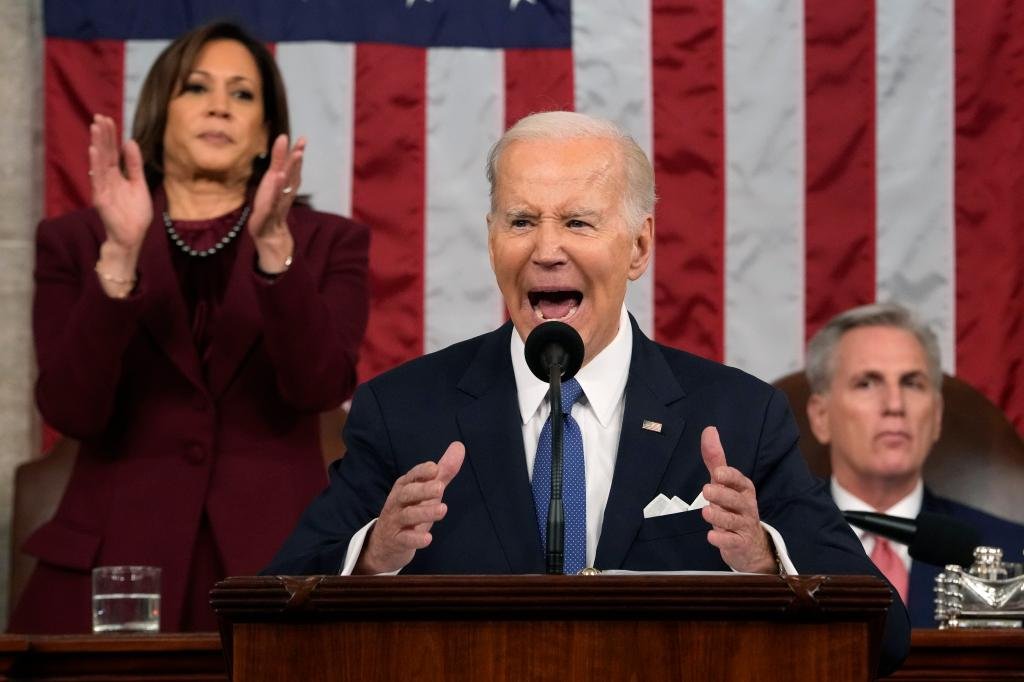Biden’s Strategic Spending Aimed at Preventing Recession Deferred Until Post-Election Period
The Nobel Prize-winning economist Robert Solow stated during the 1980s that the computer age seemed to have no impact on productivity statistics. Similarly, the same can be said about American economic growth under President Joe Biden. Since Biden took office in January 2021, the economy has experienced a growth of approximately 6.1%. While this growth is not exceptional, it is still significant considering the stagnation experienced by the global economy. However, Biden’s true achievement lies in employment. In recent months, we have witnessed unemployment rates as low as 3.4%, a level not seen since the prosperous economic era of the late 1960s. Despite these positive growth and employment figures, most other major indicators suggest that the economy is either on the verge of or already in a recession. The Purchasing Managers’ Index, which measures manufacturing orders, has been consistently showing a contraction in the sector since October 2022. The services PMI has fared somewhat better but is also displaying signs of slowdown. President Joe Biden has centered his 2024 campaign around the success of the U.S. economy. According to economists, the structure of Treasury yields is often examined to determine if the economy is heading towards a recession. Currently, this metric is at a level similar to that seen in 1928, just before the Wall Street crash and the Great Depression. The housing market is also exhibiting weakness, with house prices declining on an annual basis since April, a trend not seen since March 2007, prior to the financial crisis and the Great Recession. Additionally, the government deficit is a cause for concern. In a growing economy with low unemployment rates, the government deficit should typically shrink or even turn into a surplus. However, the current government deficit is projected to reach record levels, reaching around $2 trillion or 8% of gross domestic product in 2023, doubling since 2022. Except for the pandemic period when the government had to provide financial support, such a large government deficit was last observed during the height of the Great Recession in 2009. When considering all these figures together, it becomes apparent that something is amiss. The extraordinarily high federal-deficit number, in combination with poor figures in other areas, may lead economists to believe that the Biden administration deliberately overspends to prevent an economic downturn before the 2024 election. With traditional indicators suggesting an imminent recession, would it be surprising if the administration used government spending to sustain the economy until the American public goes to the polls? On closer examination, there is supporting evidence to substantiate this theory. The Treasury Department published a policy note at the end of June titled “Unpacking the Boom in U.S. Construction of Manufacturing Facilities.” In this document, the Treasury argues that the Inflation Reduction Act introduced by the Biden administration has led to a substantial increase in the construction of manufacturing plants. One may question if the IRA subsidies are encouraging construction companies to build manufacturing plants just as the housing market slows down and the commercial real estate market faces turmoil. By analyzing the numbers, we can observe that construction investment has been boosted by around $180.7 billion since the IRA’s enactment, with annual growth averaging 6.2%. However, when we exclude the additional growth in manufacturing construction due to IRA subsidies, growth falls to 3.2%. Interestingly, in the second quarter of 2023, total construction investment growth was 3.1% with subsidies, but without them, it contracted by 1.5%. By considering these figures, we can estimate the employment growth of construction workers. With subsidies, construction employment experiences a growth of approximately 2.6% per year in the second quarter of 2023. However, without subsidies, employment diminishes by slightly under 1%. If there were to be a decline in construction employment growth, given the weakness in the rest of the economy, it would likely indicate an impending recession. The numbers do not lie. It appears that the subsidies provided by the IRA are bolstering construction growth and sustaining the American economy. Will this manufactured growth persist until the 2024 election? It hinges on whether the IRA subsidies can continue to support the construction sector or if their effect will wane in the coming months, leading to layoffs among construction workers. Only time will provide the answer. Nonetheless, this question could ultimately determine the outcome of the 2024 election. Philip Pilkington is a macroeconomist and investment professional.
Source link




